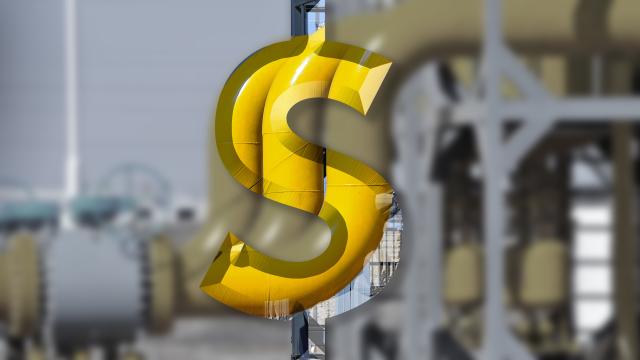
(Source: Shutterstock, Hart Energy)
The dollar volume of mergers and acquisitions in the U.S. electrical and gas distribution sector—for gas, midstream and distribution—in 2018 set a new high-water mark, according to the annual energy survey by Baker Botts. Deal volume for transactions in the United States was over $359 billion, well above the $213 billion recorded in 2017.
Notably, the entire increase was the result of increased activity in the midstream, pipeline and MLP segments where transaction volume was over $285 billion. That was more than twice the volume recorded in any previous year.
According to Baker Botts, two factors drove the extraordinary transaction volume: MLPs being acquired by their sponsors and continued consolidation. Transactions among regulated electric utilities also decreased slightly to $32.7 billion from $36.5 billion in 2017.
Among MLPs and YieldCos, the Alerian MLP Index ended the year down 19%, with a total return of -12.4%, the second consecutive year of negative returns for the index and the third such year in the last four. The index showed strength in the second and third quarters, buoyed by a stronger commodity price environment; however, those gains were erased in the fourth quarter as oil prices weakened and the broader market fell.
For the sixth year in the last seven, the Alerian MLP Index lagged the S&P 500 on a total return basis. Against this backdrop, MLP and midstream equity-capital activity atrophied in 2018. There were zero MLP IPOs. Just a year earlier, there were five, raising $2.4 billion. In 2018 there were nine follow-on equity raises for $2.6 billion, but that pales in comparison to 25 in 2017, raising $9.5 billion.
The amount raised in the debt-capital markets in the sector increased year over year to $43.8 billion from $38.9 billion in 2017, according to Baker Botts. The total number of transactions was down to just 34 in 2018, compared to 54 in the previous year. The debt-capital markets were largely closed, however, for MLPs and midstream companies without an investment-grade rating. In 2018 there were 22 investment-grade debt-capital transactions raising $35.8 billion were.
Many MLPs have completed or announced transactions in which the MLP is acquired by its sponsor, including Antero, Dominion Energy Midstream, Spectra Energy Partners and Western Gas Partners. Additionally, some MLPs have announced a shift in their distribution growth strategy as the limited access to the capital markets have caused MLPs to finance a greater portion of their growth from internally generated cash. Others like Energy Transfer Partners have indicated they may pursue unit buybacks over distribution increases if that is what the market prefers.
Baker Botts noted, “With volatility in commodity prices and signs of headwinds on the U.S. economy, we expect to see modest follow-on equity and high-yield activity levels in MLPs. Of the small number of non-investment grade offerings so far in 2019, MLPs and midstream accounted for four—Targa, DCP Midstream, Antero Midstream and USA Compression—for a combined $3.2 billion. We expect that MLPs will continue to pursue organic investments in infrastructure, which will reduce some of the financing needs in the sector. However, we anticipate that the MLP IPO market to remain quiet in 2019.”
In 2018, M&A activity remained healthy. The number of transactions decreased, but total dollar volume increased. In the sector, 85 transactions were announced with an aggregate disclosed value of approximately $146.3 billion. That is compared to 96 transactions with a disclosed value of $85.4 billion in 2017.
“The simplification trend that started in 2014 is winding down,” said Baker Botts, “though there are still some companies that might undertake one. Already in 2019, PBF Logistics, EQM Midstream and Summit Midstream announced that they were buying their respective sponsors’ IDRs in exchange for common units. Consolidations and the elimination by many MLPs of their incentive distribution rights leave MLPs better able to self-fund and have helped to stabilize distributions.”
The YieldCo sponsor merry-go-round continued in 2018, Baker Botts noted, a trend that started in 2017 with Brookfield Renewable Energy’s acquisition of TerraForm Power and TerraForm Global out of SunEdison’s bankruptcy. In 2018, several clean-energy developers sold their YieldCo stakes to companies and funds whose primary business is the ownership and operation of energy infrastructure.
Solar installation represented 30% of all new power generation to come on-line in the United States in the first three quarters of 2018. That made solar the second-most popular new-generation source after natural gas. Nevertheless, that represents a decrease from the solar market share of electricity generation additions in 2017 of 33%, and 2016 of 40%. The consulting firm Wood Mackenzie anticipates that the price per watt of solar will fall to about 30 cents by the end of 2019, which is less than the price before the tariffs.
The volume of LNG traded globally continued to grow in 2018 as liquefaction projects under development came into service. As the quantity of LNG increased, imports around the world also increased. Europe, which several years ago had been a reloading market, began importing LNG for use in domestic markets. In Asia, China took the lead in import growth in 2018, due to increased pressure to move away from coal.
LNG Canada announced that its joint venture participants—Shell, Petronas, PetroChina, Mitsubishi and KOGAS—made their commitment to proceed. That is a big move for the country and the west coast of North America.
According to Wood Mackenzie, final investment decisions could be made for more than 60 million metric tons per year of LNG capacity. That would surpass the current record of FIDs totaling 45 metric tons per year in 2005.
There was also an uptick in project finance by new players and structures. Baker Botts suggested that there were also promising signs of major financings coming to the market, especially for power, including renewables, and U.S. LNG export projects that were slow during 2018 but are inching closer to FID.
That said, Baker Botts cautioned, “growing investor confidence was somewhat dampened due to ongoing trade conflicts and uncertainty over the U.S.-China trade war in particular, resulting in some investment decisions being put on hold. Rapid urbanization, especially in Africa, Latin America and Asia, and climate change driven policies and technology were the largest drivers shaping the pace and nature of energy and infrastructure demands and project financing trends globally.”
Notably, project financing of LNG continued to advance. Several floating and onshore projects have begun production, which has encouraged appetite among financiers for new LNG export, especially in the U.S., Asia, Latin America and Africa. 2019 is expected to see a rejuvenated boom after a slowdown in 2018. Buyers are showing a willingness to sign the long-term off-take contracts that are required for export projects to secure financing. Most of the new gas demand will be in Asia, which has seen a regasification push. Of the forecast LNG supply surge, however, most is expected to come from the U.S.
Recommended Reading
US Drillers Add Oil, Gas Rigs for First Time in Five Weeks
2024-04-19 - The oil and gas rig count, an early indicator of future output, rose by two to 619 in the week to April 19.
Strike Energy Updates 3D Seismic Acquisition in Perth Basin
2024-04-19 - Strike Energy completed its 3D seismic acquisition of Ocean Hill on schedule and under budget, the company said.
Santos’ Pikka Phase 1 in Alaska to Deliver First Oil by 2026
2024-04-18 - Australia's Santos expects first oil to flow from the 80,000 bbl/d Pikka Phase 1 project in Alaska by 2026, diversifying Santos' portfolio and reducing geographic concentration risk.
Iraq to Seek Bids for Oil, Gas Contracts April 27
2024-04-18 - Iraq will auction 30 new oil and gas projects in two licensing rounds distributed across the country.
Vår Energi Hits Oil with Ringhorne North
2024-04-17 - Vår Energi’s North Sea discovery de-risks drilling prospects in the area and could be tied back to Balder area infrastructure.




